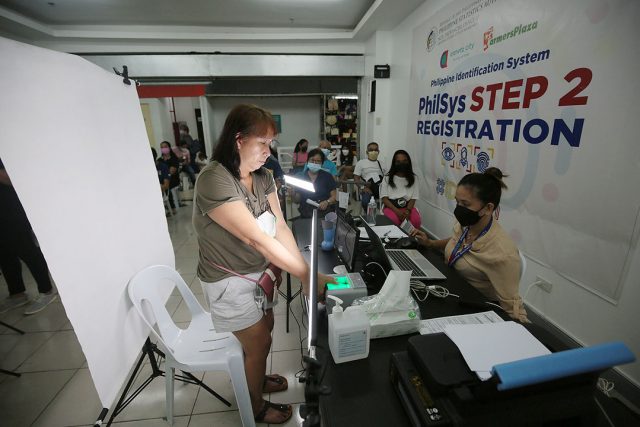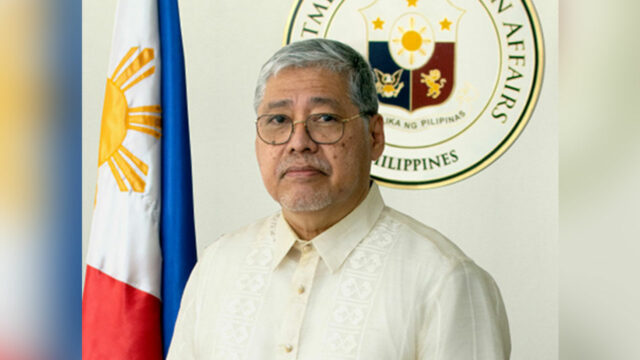By Kyle Aristophere T. Atienza Reporter and Kenneth Christiane L. Basilio
THE PHILIPPINES will join the world’s largest naval drill in Hawaii this month, according to the US Pacific Fleet.
It will be joined by Malaysia, Singapore, Thailand and Indonesia from the Southeast Asian region and 24 other countries in the Rim of the Pacific (RIMPAC) exercise from June 26 to Aug. 2 in and around the Hawaiian Islands, the world’s largest fleet command said in a statement posted on its website.
About 40 surface ships, three submarines, 14 national land forces, more than 150 aircraft and over 25,000 people will participate in the biennial naval drill, it added.
Australia and Japan, two key US allies in the Indo-Pacific region that have pursued closer ties with the Philippines under President Ferdinand R. Marcos, Jr., will also participate in the drills.
Participants also include Belgium, Brazil, Brunei, Canada, Chile, Colombia, Denmark, Ecuador, France, Germany, India, Israel, Italy, Mexico, Netherlands, New Zealand, Peru, South Korea, Sri Lanka, Tonga and the United Kingdom.
“During RIMPAC, integrated and prepared partners train and operate together in order to strengthen our collective forces and promote a free and open Indo-Pacific,” according to the statement.
“RIMPAC 2024 contributes to the increased interoperability, resiliency and agility needed by the Joint and Combined Force to deter and defeat aggression by major powers across all domains and levels of conflict,” it added.
The US, Japan and Australia have been active in calling for a free and open Indo-Pacific region amid China’s growing assertiveness in the South China Sea and nuclear threats from North Korea — issues that Mr. Marcos has raised in various international fora.
The region is home to seven of the world’s 10 largest military powers including China, which claims the South China Sea almost in its entirety including areas within the Philippines’ exclusive economic zone.
The Philippines is a member of the 10-member Association of Southeast Asian Nations, which will be chaired by Malaysia next year.
“RIMPAC is a rich opportunity for the Philippines to learn with fellow navies on the trends and timeless lessons on naval warfare and interoperability with like-minded partners in a coalition scale of operations,” Joshua Bernard B. Espeña, who teaches international relations at the Polytechnic University of the Philippines, said in a Facebook Messenger chat.
“There is also the bonus of improving the Philippine Navy’s tempo of operating in distance beyond archipelagic waters,” he added.
Mr. Marcos last week vowed to give the Armed Forces of the Philippines (AFP) the resources and training it needs to boost its external defense role.
“Now, I am sure that all of you are aware now that the internal threat has been reduced,” he told the Army’s 10th Infantry Division in Mawab, Davao de Oro in southern Philippines. “We now have to also think about the external threat, and that again is a different strategy that we will have to employ.”
“The bottom line is for the AFP to learn the lost art of conventional warfare — lost since the AFP has been immersed in internal security operations which are much land-based,” Mr. Espeña said.
“At the strategic level, it sends a message of Manila’s determination to keep moving and learning in the hope of communicating to adversaries that going beyond Manila’s red line is counterproductive to its interests.”
The US Third Fleet will serve as the RIMPAC’s combined task force commander, while a member of the Chilean Navy will serve as deputy commander. A member of the Japan Maritime Self-Defense Force will serve as vice commander.
UN RESOLUTION
Also on Monday, Party-list Rep. Erwin T. Tulfo filed a resolution urging the government of Mr. Marcos to take the Philippines’ sea dispute with China to the United Nations (UN) General Assembly.
The Department of Foreign Affairs (DFA) should sponsor a resolution before the UN assembly calling on Beijing to “stop unlawful actions” within the Philippines’ exclusive economic zone, according to House Resolution No. 1766.
“The UN, through its resolutions, can significantly influence international norms and policies, providing a robust platform for the Philippines to assert its maritime rights and seek global support against unlawful actions by any state,” Mr. Tulfo said in a separate statement.
Tensions between the Philippines and China have worsened in the past year as Beijing’s coast guard continues to block Philippine resupply missions to Second Thomas Shoal, where it grounded a World War II-era ship in 1999 to assert its sovereignty.
The shoal is more than 1,000 kilometers from China’s nearest major landmass, Hainan Island, and about 200 kilometers from the Philippine island of Palawan.
A UN-backed tribunal in 2016 voided China’s claim to more then 80% of the sea for being illegal.
The landmark decision “conclusively invalidated the Chinese government’s expansive claims under the so-called nine-dash line,” Mr. Tulfo said in the resolution.
He said China’s disregard of international law diminishes the country’s territorial integrity and compromises regional stability.
The Chinese Embassy in Manila did not immediately reply to a Viber message seeking comment.
“In principle, this is what we are supposed to be doing,” Hansley A. Juliano, a lecturer at the Ateneo de Manila University’s Department of Political Science, told BusinessWorld in a Facebook Messenger chat.
A DFA resolution before the UN General Assembly would “mostly be a restatement” of the tribunal’s ruling in 2016, he added.
“The resolution brought to the UN General Assembly could draw more significant global attention to the Philippines’ stance on the South China Sea dispute,” Julia Rocio Salle Gatdula, a defense economist at the University of Asia and the Pacific, said via Messenger chat.
“But it is important to note that UN General Assembly resolutions are nonbinding, thus providing limited political power,” she added.
China is unlikely to honor a UN resolution over the South China Sea, Mr. Juliano said. “China is clear at this point that the only international order it wants is the one where it’s at the top.”
The UN General Assembly’s track record on geopolitical issues is also “spotty” because the body is “held hostage” by countries with nuclear arms and veto power, he added.
Mr. Juliano said Manila’s advantage is that it is an ally of the United States, which could support it in the push against about Beijing’s encroachment within Philippine waters.












